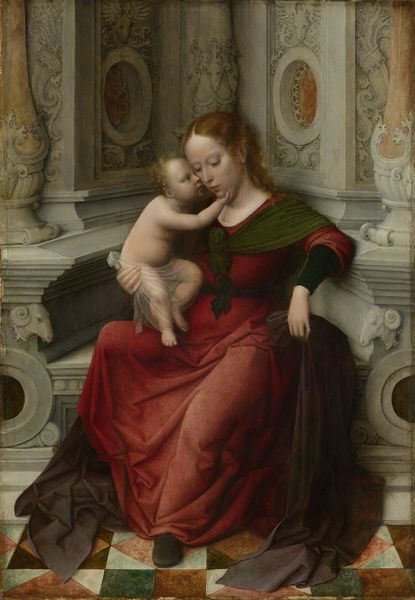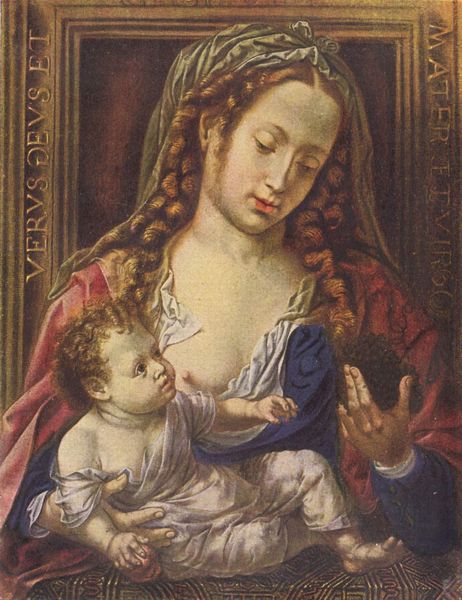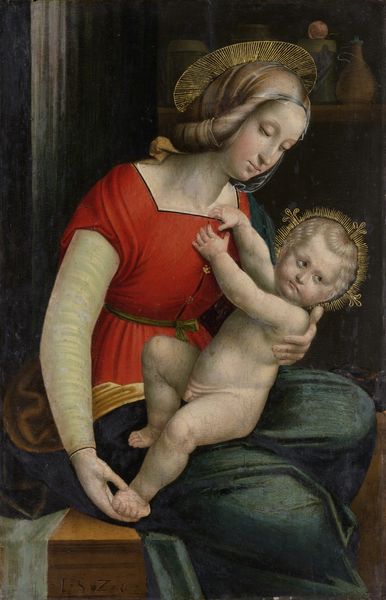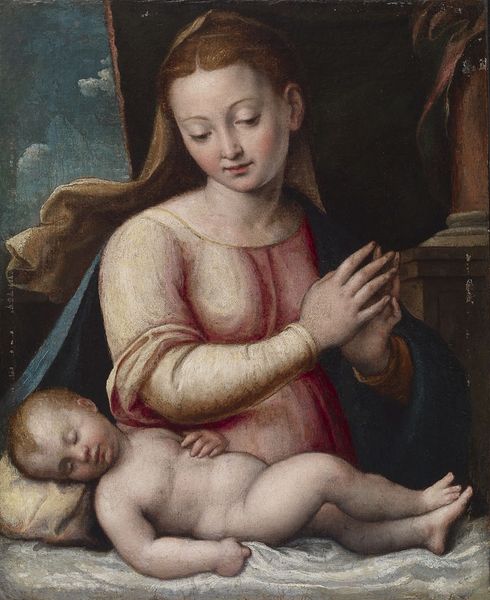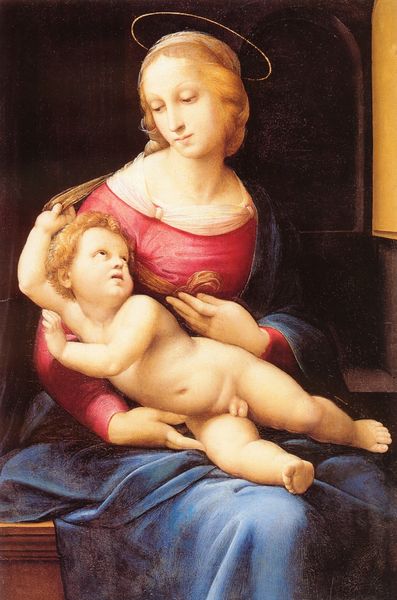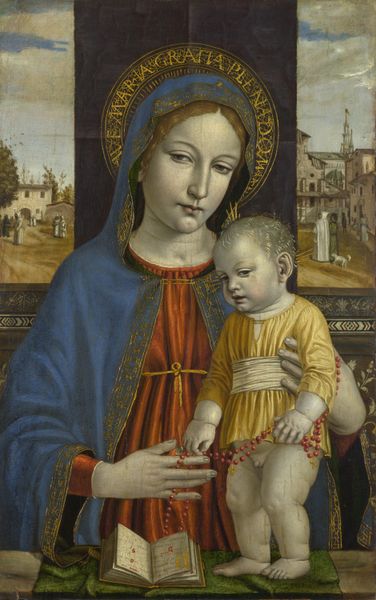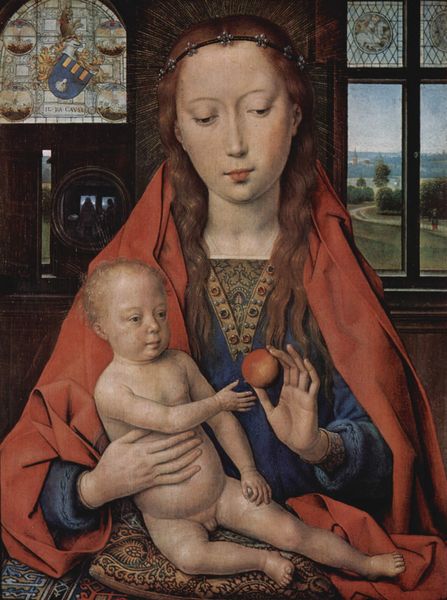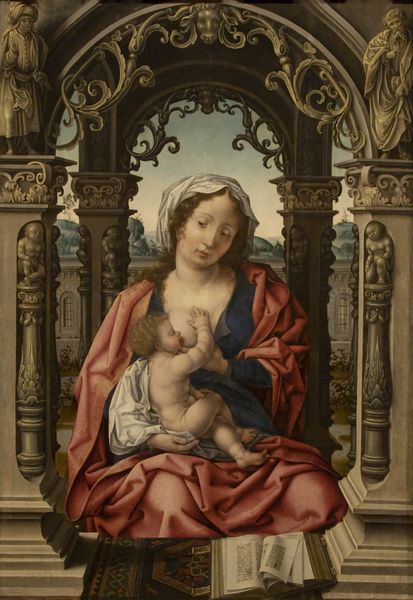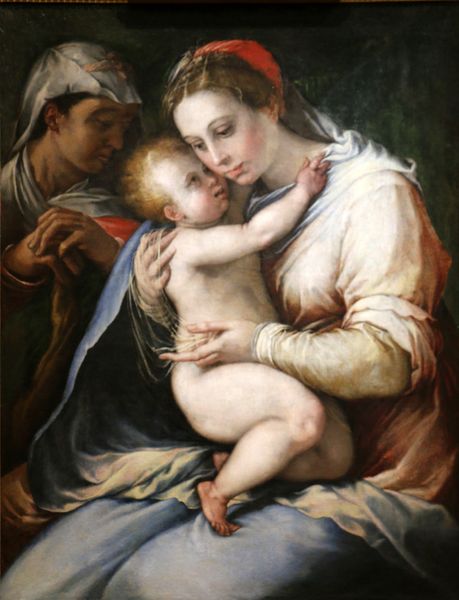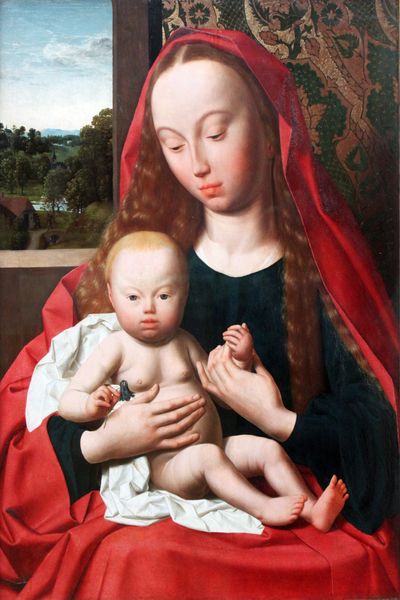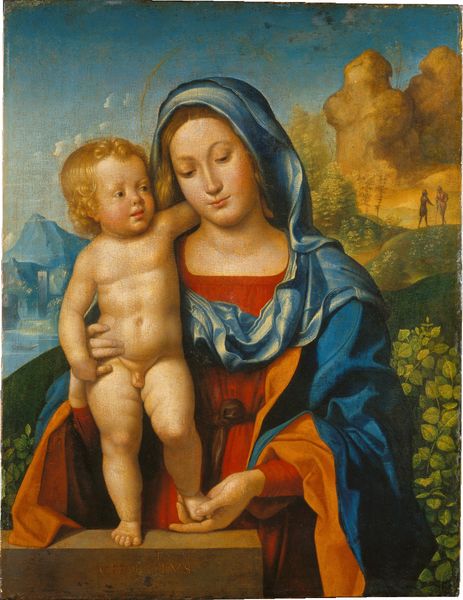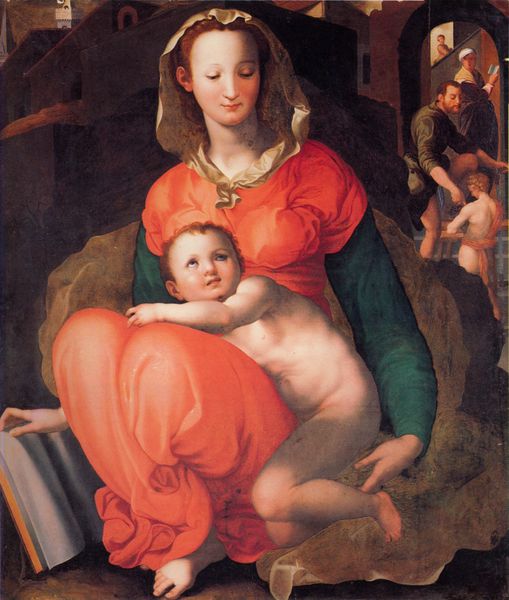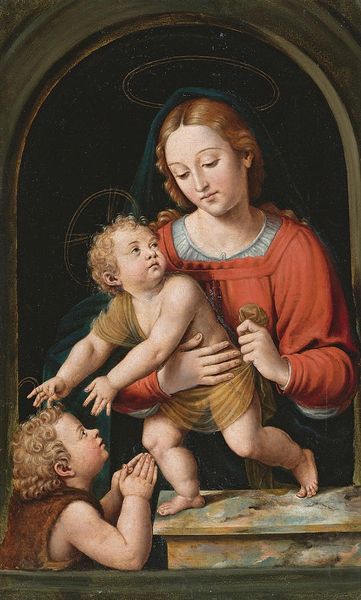
painting, oil-paint
#
portrait
#
high-renaissance
#
painting
#
oil-paint
#
figuration
#
oil painting
#
child
#
christianity
#
mythology
#
history-painting
#
italian-renaissance
Copyright: Public domain
Curator: Before us hangs Jan Gossaert’s, more famously known as Mabuse, "Madonna and Child," painted around 1527. It currently resides in the Museo del Prado. The artist masterfully employed oil paints to create this moving representation. What strikes you first about this piece? Editor: There’s an immediate tenderness—a serene melancholy in the Madonna's face. Her gentle downward gaze and the soft lighting evoke a protective maternal intimacy. What kind of oil paint production and use do we see evidence for? Curator: The painting technique is remarkable. The luminous flesh tones, the carefully rendered fabrics – you can almost feel the weight of the cloth – all indicative of highly skilled workshop practices. Notice the exquisite details of the crown and the way the light plays on the pearl beading. Mabuse, known for his attention to detail, was certainly working with exceptional pigment materials. The question of workshop involvement certainly comes to mind. How many hands worked on this? Editor: And what do we make of the apple held by the Christ Child? This familiar motif obviously signals the Fall of Man and his eventual redemption. But it also references Mary's role as the "New Eve," undoing the original sin through her son. It connects this work with other paintings featuring Mary and child with apples as their way of referencing temptation in eden. Curator: It also acts a reminder of the physical realities of the artist’s practice. Think about sourcing the pigments, the grinding, the layering…consider the socio-economic conditions required for someone like Mabuse to focus solely on creating paintings like this, removed from the necessity of daily labor, sustained by patronage and societal structures that prioritized artistic creation as a valued practice. Editor: I find compelling how Mabuse employs established symbols to weave layers of meaning, while hinting at a subtle and perhaps complicated understanding of devotion, hope, and consequence. This picture embodies not only an individual spiritual conviction but also the Renaissance era’s way of understanding itself through symbolic language. Curator: Thinking about this artwork through these perspectives illuminates the complexities and contexts involved in the painting. By examining both the iconography and the making, we get a fuller sense of the piece's cultural weight. Editor: Absolutely, from this close observation, the painting invites continuous interpretations through time, where meanings and making processes, in their own terms, meet with human history.
Comments
No comments
Be the first to comment and join the conversation on the ultimate creative platform.
